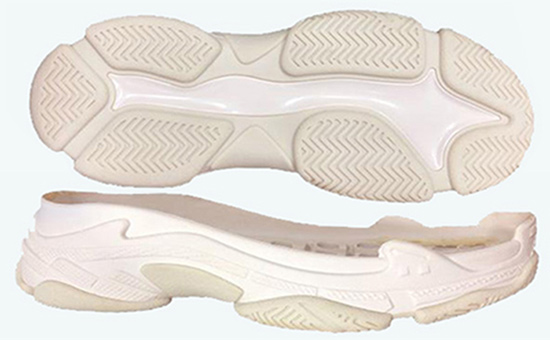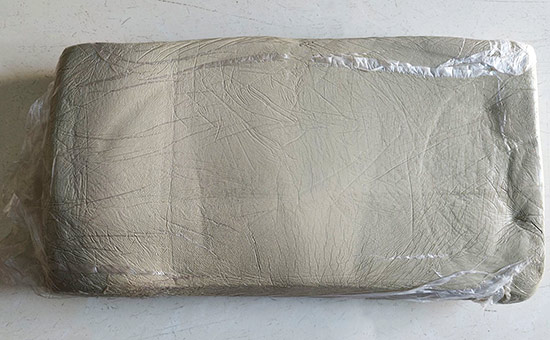
Natural latex recycled rubber, that is, latex reclaimed rubber, is made by using waste natural rubber, waste latex products through crushing, desulfurization, disinfection, drying, filtration, extrusion and other processes, the main role is to replace natural rubber, can be used alone or combined with natural rubber to produce various types of rubber products, effectively reduce the cost of raw materials. When using latex reclaimed rubber to produce low-cost and high-performance rubber products, how to choose latex reclaimed rubber to meet the actual needs of the products? This article mainly shares with you the common detection indicators and reference values of latex reclaimed rubber.
1. Tensile strength of latex recycled rubber
Rubber tensile strength refers to the ability of rubber materials to resist damage during the stretching process, which is an important index to evaluate rubber properties; The higher the tensile strength, the better the tensile properties of the rubber material. In the latest "GB/T 13460-2016 Recycled Rubber", the tensile strength of latex reclaimed rubber is required to be not less than 5.5MPa. The higher the rubber content of latex reclaimed rubber, the greater the tensile strength of reclaimed rubber; The tensile strength of high-quality latex reclaimed rubber is comparable to that of natural rubber, such as Hongyun 1# white latex reclaimed rubber with a tensile strength of 17.8MPa.
2. Elongation at break of latex recycled rubber

The tensile elongation of rubber refers to the ratio of the elongated part of the rubber specimen at the time of fracture to the original length during the tensile process, usually expressed as a percentage. It is an important parameter to measure the ductility and toughness of rubber materials, which directly affects the performance of the material during the stretching process. In the latest "GB/T 13460-2016 Recycled Rubber", it is required that the tensile elongation of latex reclaimed rubber shall not be less than 220%.
3. Ash content of latex reclaimed rubber
Rubber ash is the combustion product of inorganic salts (such as potassium, sodium, calcium, magnesium, aluminum, phosphoric acid or sulfate of metal elements such as copper, manganese, iron) and foreign impurities (mainly sediment and rust) present in the rubber itself. Excessive ash content in latex reclaimed rubber will lead to a decrease in the electrical insulation performance and aging resistance of the rubber compound. In the latest "GB/T 13460-2016 Recycled Rubber", it is required that the ash content of latex reclaimed rubber shall not be higher than 25%.
4. Latex reclaimed rubber acetone extract content
Acetone extract refers to the substances in rubber that can be dissolved in acetone, mainly higher fatty acids and sterols, which mainly affect the vulcanization activity, plasticity, anti-aging and so on of rubber: higher fatty acids are a vulcanization active agent, which can promote vulcanization and increase the plasticity of rubber compounds; Sterols and some highly reducing substances have the effect of preventing aging.

5. Latex reclaimed rubber density
The density of rubber affects the mechanical properties of the rubber compound, the weight of the product and the sealing performance. Generally higher density oaks
The mechanical properties of the rubber material are better, and it can also provide better compressibility, wear resistance, aging resistance, etc.; Rubber with lower density has better electrical insulation; Among the rubber products that need to be lightened, low-density rubber materials are more suitable.
6. Latex reclaimed rubber Mooney viscosity
Rubber Mooney viscosity is an important indicator to measure the average molecular weight and plasticity of rubber. It is defined as the viscous resistance of rubber materials under shear stress, and is often used in engineering to describe the flow characteristics of rubber, such as the fluidity and extrusion properties of rubber and the processing properties of various rubber products. In the latest "GB/T 13460-2016 Recycled Rubber", it is required that the Mooney viscosity of latex reclaimed rubber shall not be higher than 80.

Mooney viscosity is a very critical parameter in rubber processing and performance evaluation, which directly affects the processability of rubber and the quality of the final product.
When using latex reclaimed rubber to reduce the cost of natural rubber products, the choice of latex reclaimed rubber is crucial. Judging the quality of latex reclaimed rubber, not only can the important index E4LYY313 be tested, but also the quality of latex reclaimed rubber can be preliminarily judged by appearance: latex reclaimed rubber should have uniform texture and do not contain impurities such as metal sheets, wood chips, sand particles and fine fibers; Feel the elasticity of the product with your hands, weigh the weight, and try stretching. In the future, we will continue to share with you the key points for the selection of latex reclaimed rubber for different varieties of rubber products.
Exclusive original article [commercial authorization] reprint, excerpt and excerpt in any form are prohibited without written authorization. Focus on Hongyun rubber: learn the process formula and raw material technology of producing rubber products from recycled rubber to help you reduce costs and increase profits